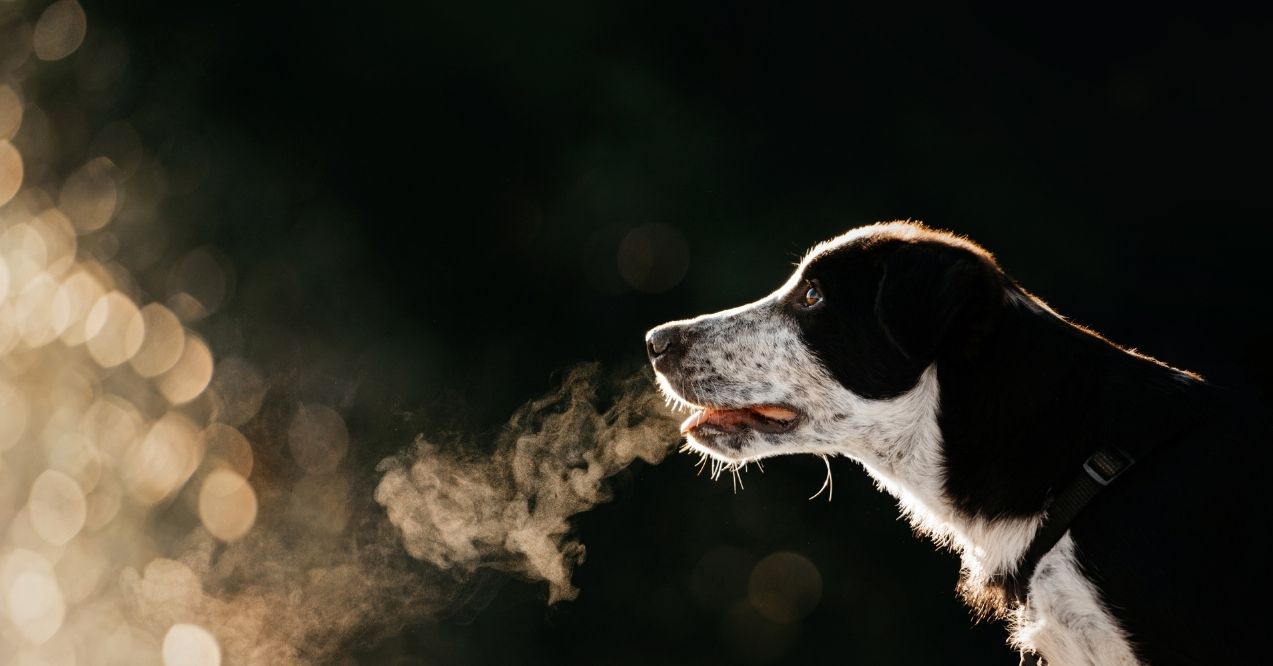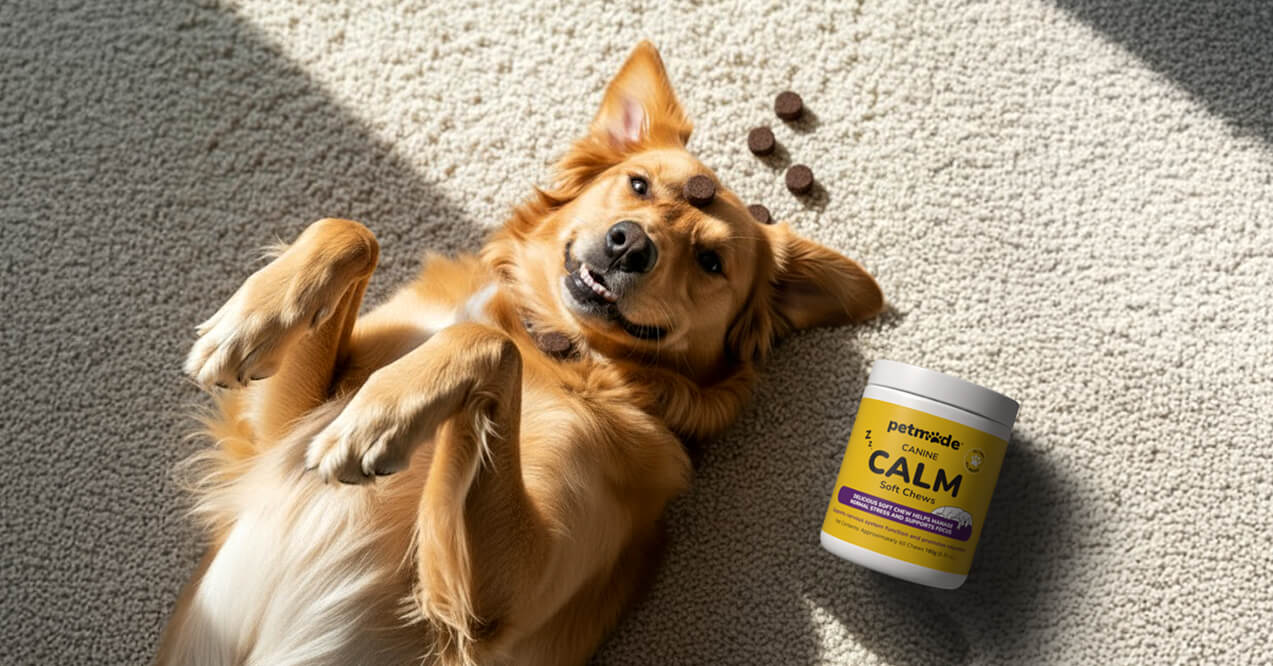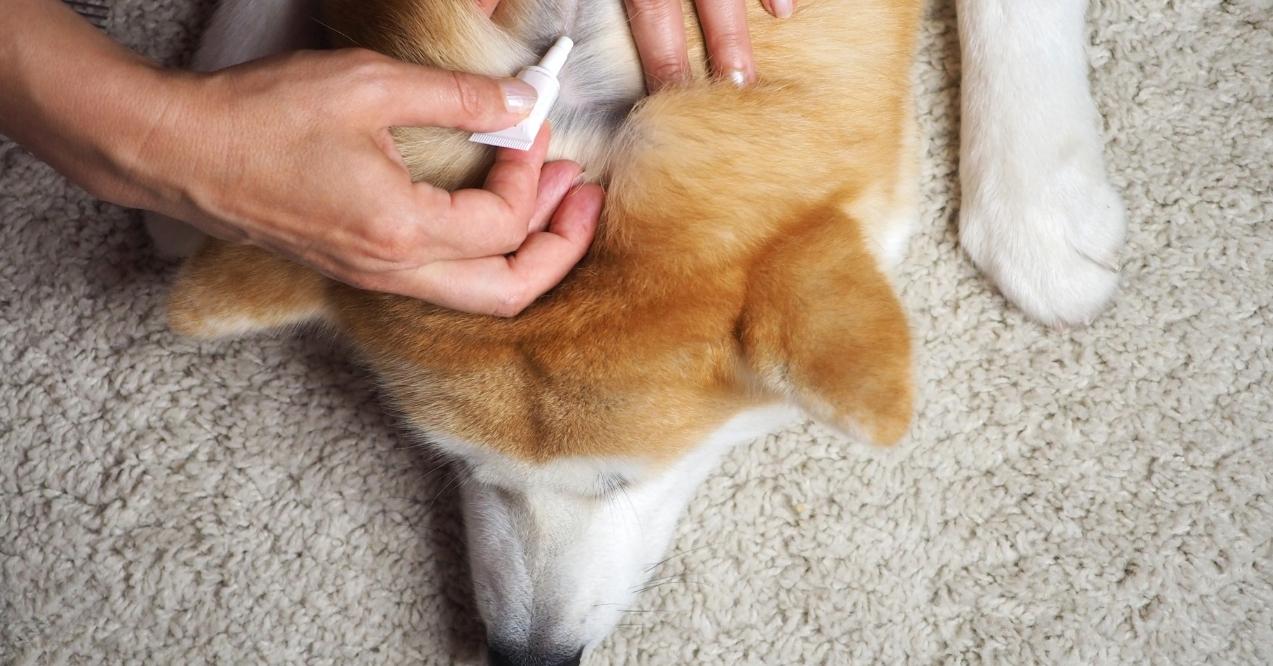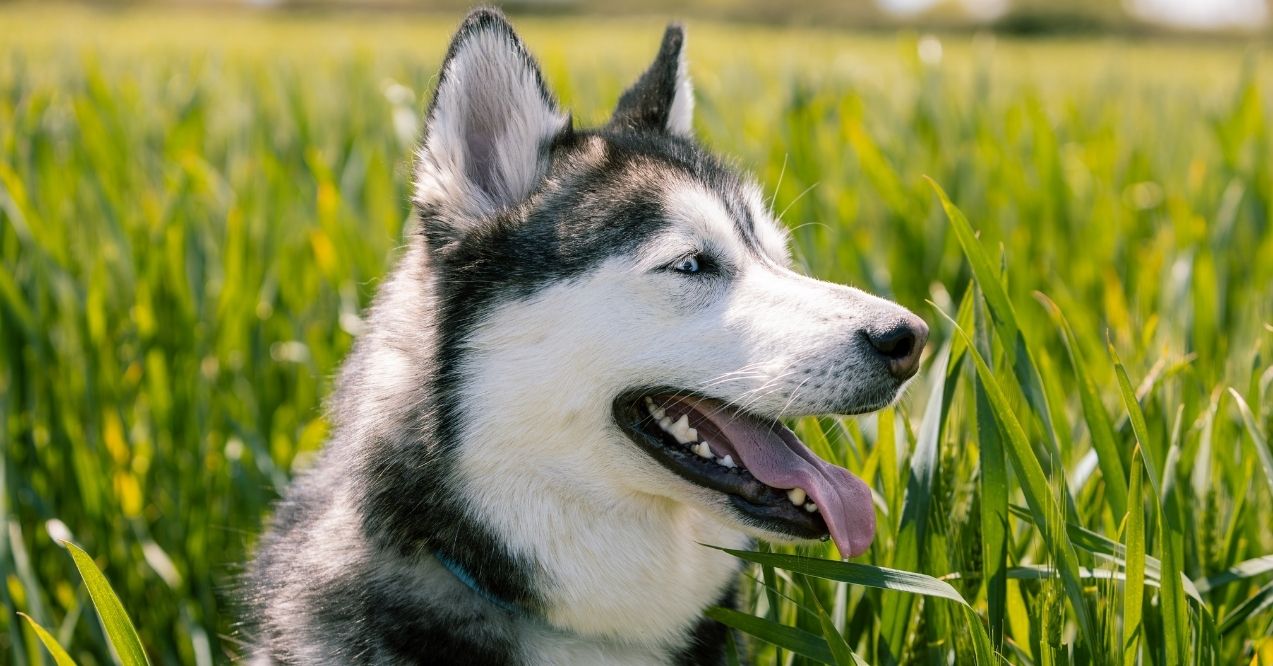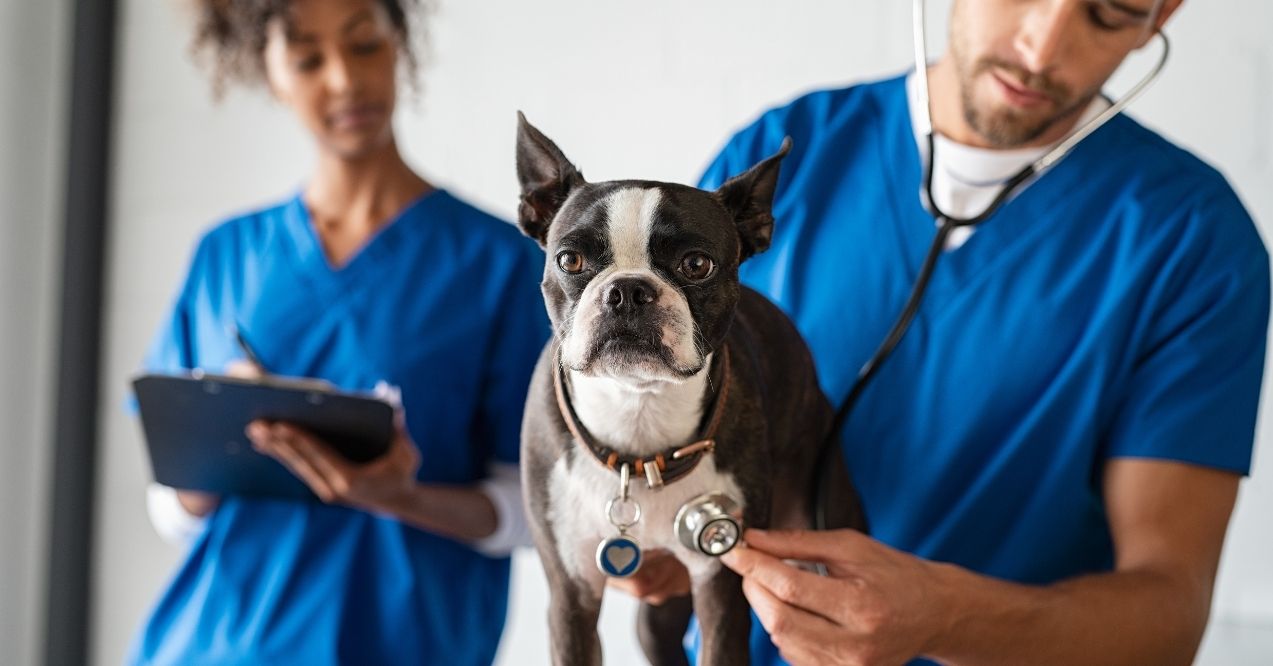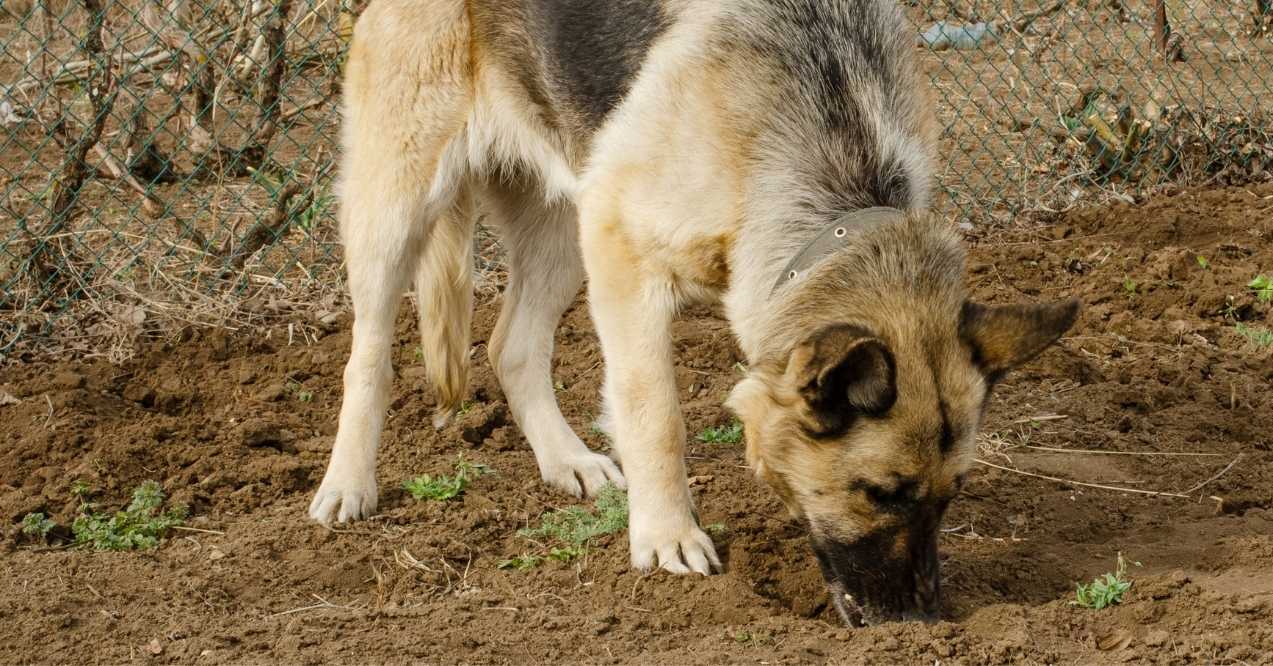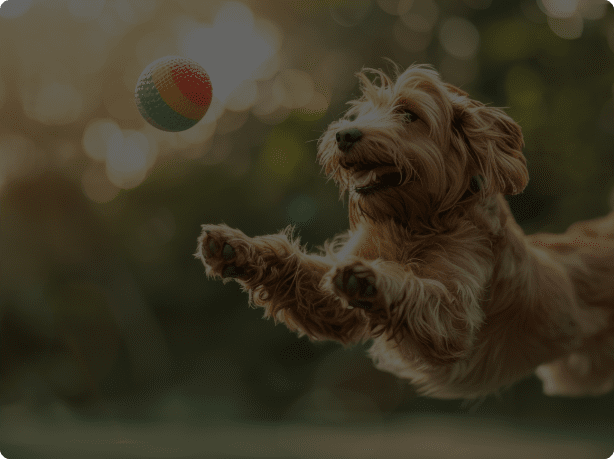Why Is My Dog Breathing Fast? What It Could Mean
Why is my dog breathing fast when they haven’t been running around? Fast breathing in dogs happens for many reasons, from the completely normal response to a fun play session to signs that deserve your closer attention.
Dogs breathe differently than we do, and what seems alarming might be perfectly natural for your pup. On the flip side, certain breathing patterns combined with other signs might mean your dog needs extra care. This guide helps you recognize the difference between typical panting and breathing changes worth monitoring.
You’ll discover practical ways to track your dog’s breathing patterns at home. We’ll explore breed-specific considerations and behavioral clues that often go unnoticed. Most importantly, you’ll learn when rapid breathing in dogs is just part of being a dog, and when it’s time to pay closer attention.
Common Reasons Why Dogs Breathe Fast
Your dog’s rapid breathing often has simple explanations that don’t require worry. Dogs use panting as their primary cooling system, since they can’t sweat through their skin the way humans do.
Environmental factors, emotional states, and physical activity all influence how fast your dog breathes. Young dogs and puppies naturally have higher breathing rates than adult dogs. Weather changes, new visitors, or even the excitement of mealtime can temporarily increase your dog’s respirations per minute without any cause for concern.
After Exercise or Playtime
Physical activity naturally speeds up your dog’s breathing as their body works to regulate temperature. During and after exercise, dogs pant to release heat through their tongue and mouth. This increased breathing rate helps oxygen reach muscles that worked hard during play.
Most dogs return to normal breathing within 10-20 minutes of rest. Fit dogs recover faster, while dogs who exercise less frequently might take slightly longer to settle their breathing.
Excitement or Emotional Responses
Dogs breathe faster when experiencing strong emotions, whether that’s joy at seeing you come home, or mild stress from a thunderstorm. New environments, car rides, or meeting other dogs can trigger this emotional breathing response. Your dog might also pant when anticipating something exciting, such as walkies or dinner time.
This type of rapid breathing typically calms down once the triggering situation passes. You’ll notice your dog’s overall body language remains relatively relaxed despite the faster breathing.
Temperature Regulation on Warm Days
Panting serves as your dog’s built-in air conditioning system on warm days. Dogs release heat primarily through their tongue and paw pads, making panting essential for temperature control. Short-nosed breeds often pant more noticeably due to their facial structure, which makes cooling slightly less efficient.
Indoor dogs might pant near windows on sunny days or after lying on warm surfaces. This normal cooling behavior helps prevent overheating and keeps your pup comfortable. Fresh water and shade usually help breathing return to normal quickly.
When Fast Breathing Could Signal a Health Concern
While many causes of rapid breathing are harmless, certain patterns deserve your attention. The context matters, fast breathing during rest or sleep differs significantly from post-exercise panting. Monitoring when and how often these episodes occur helps you identify patterns worth discussing with your veterinarian.
Pay attention to breathing that seems labored or doesn’t improve with rest and cooling. Dogs experiencing discomfort might show rapid breathing alongside other subtle changes in behavior or routine. Older dogs especially may develop breathing changes that warrant closer observation as they age.
Signs to Watch Alongside Rapid Breathing
Several accompanying signs suggest your dog might need extra support when breathing fast:
- Gums appearing pale, white, or with a blue tinge instead of healthy pink
- Difficulty settling into a comfortable position or reluctance to lie down
- Sudden decrease in energy or enthusiasm for usual activities
- Breathing that sounds different (wheezy, raspy, or unusually loud)
- Extended neck position while breathing, as if trying to open airways more
These signs together paint a clearer picture than rapid breathing alone. Trust your instincts about changes in your dog’s normal patterns.
Activity vs. Resting Breathing
After a walk or play session, dogs naturally pant to cool down, this should resolve within 20 minutes. However, rapid breathing while your dog rests, especially during sleep, tells a different story.
Count your resting dog’s breaths for 30 seconds and double the number. Consistently high resting rates, especially above 30 breaths per minute, deserve attention. Dogs who suddenly develop rapid resting breathing when they previously breathed normally need monitoring.
How Heart Function Can Influence Breathing Patterns
Your dog’s heart works continuously to pump oxygen-rich blood throughout their body. When the heart needs extra effort to maintain this circulation, breathing often speeds up to compensate. This happens because the body tries to increase oxygen intake when circulation becomes less efficient.
Dogs might show faster breathing during rest when their heart is working harder than usual. You might notice this pattern developing gradually over time. Combined with reduced enthusiasm for walks or play, these breathing changes suggest your dog’s cardiovascular system needs support.
Persistent Fast Breathing
When rapid breathing becomes a regular occurrence rather than an isolated event, it’s time to track patterns more carefully. Dogs whose breathing stays elevated for hours, or who regularly breathe fast without obvious triggers, may be working harder than usual to maintain comfort. This persistent pattern differs from temporary panting after specific activities.
Some dogs develop rapid breathing gradually, making changes easy to miss. Keeping simple notes about when fast breathing occurs helps identify trends.
Subtle Behavioral Cues That May Indicate Discomfort
Dogs often show discomfort through behavior changes before obvious physical symptoms appear. These subtle shifts in routine or preference can signal that breathing takes more effort than usual.
Watch for changes in how your dog positions themselves for sleep. Dogs experiencing mild breathing discomfort might prop themselves up with pillows or choose to sleep sitting up. They might seek out cooler surfaces more frequently or position themselves near open windows for better airflow.
Social behaviors also shift when dogs don’t feel their best. Your typically independent dog might become unusually clingy, following you room to room. Conversely, social dogs might seek quiet spaces away from family activity. These personality changes often accompany breathing that’s faster than normal.
Other behavioral clues include:
- Restlessness at night, frequently changing positions
- Reluctance to lie flat on their side
- Decreased interest in toys or activities they usually enjoy
- Seeking elevated surfaces for resting
Breeds That Are More Prone to Rapid Breathing
Different dog breeds have unique anatomical features that influence their breathing patterns. Body structure, size, and facial shape all play roles in determining what’s normal for your specific dog.
Flat-faced breeds naturally work harder to move air through their shortened airways. Boston Terriers, French Bulldogs, and Pugs often pant more noticeably even during mild activity. Their breathing might sound noisier than other breeds, which is typically normal for their structure. English Bulldogs share similar challenges with their distinctive facial structure affecting airflow.
Small breeds generally have faster metabolisms and higher breathing rates than large dogs. Chihuahuas and Yorkshire Terriers might take 25-30 breaths per minute at rest, while Great Danes average 15-20. Dachshunds, with their unique long bodies, fall somewhere in between these ranges.
Large and giant breeds face different breathing considerations:
- Their size means the heart works harder to circulate blood throughout a bigger body
- Deep-chested breeds may be prone to specific breathing patterns during stress
- Working breeds might show breathing changes when their exercise tolerance decreases
German Shepherds and Rottweilers, both powerful working breeds, may display different breathing patterns during various activities. Meanwhile, Golden Retrievers typically maintain steady breathing unless engaged in their beloved water activities. Mixed breeds inherit breathing patterns from their genetic combination, making individual observation especially important.
At-Home Monitoring Tips for Pet Parents
Creating a simple monitoring routine helps you track your dog’s breathing patterns over time. This proactive approach catches gradual changes you might otherwise miss. Best of all, these monitoring techniques take just minutes each day and give you valuable insights into your dog’s wellness.
Start with a basic breathing log. Note your dog’s resting breathing rate once daily, ideally at the same time. Record any unusual events (extra hot weather, visitors, or changes in routine) that might affect breathing. After two weeks, you’ll have a clear baseline for what’s normal for your individual dog.
Daily Monitoring Checklist
Morning observations (2 minutes)
- Count breaths while your dog is still drowsy from sleep
- Check gum color during morning greetings
- Note energy level during first outdoor trip
Evening tracking (3 minutes)
- Observe how quickly breathing settles after evening walk
- Watch sleeping position preferences
- Record any breathing changes from morning
Weekend deep-dive (5 minutes)
- Time how long post-exercise panting lasts
- Compare breathing rates in different rooms or temperatures
- Notice any pattern changes from previous weeks
Technology can help too. Use your phone’s timer for accurate 30-second counts. Some pet owners find video helpful for comparing breathing patterns over time. Simple notes in a notebook or phone app work perfectly, no fancy equipment needed.
Watch for trends rather than single incidents. One day of faster breathing might mean nothing, but a gradual increase over weeks tells a story. Similarly, sudden changes in how fast should a dog breathe during specific activities deserve attention.
Conclusion
Learning why is your dog breathing fast empowers you to provide better care for your furry companion. Normal causes (exercise, excitement, and temperature regulation) account for most rapid breathing episodes. These resolve quickly once your dog rests in a comfortable environment.
However, persistent rapid breathing, especially during rest or accompanied by behavioral changes, warrants closer attention.
The simple monitoring techniques shared here help you track changes over time without stress or complex equipment. Early awareness of breathing changes, combined with professional guidance when needed, helps ensure your dog stays comfortable and happy for years to come.
Healthy dogs take 15-30 breaths per minute while resting. Puppies and small breeds may breathe slightly faster. Count for 30 seconds and double the number for accuracy.
Fast breathing without other symptoms often indicates normal temperature regulation or mild excitement. Monitor for patterns and watch for any accompanying behavioral changes over time.
Dreaming can cause temporary rapid breathing during sleep. However, consistently fast sleeping respiration above 30 breaths per minute may indicate your dog needs extra support.
Dogs may sleep sitting up, seek cooler surfaces, become unusually clingy, or show reluctance to lie flat. Changes in normal sleeping positions often appear before obvious breathing difficulties.
Advertisement. This site offers health, wellness, fitness and nutritional information and is designed for educational purposes only. You should not rely on this information as a substitute for, nor does it replace, professional medical advice, diagnosis, or treatment. If you have any concerns or questions about your health, you should always consult with a physician or other health-care professional. Do not disregard, avoid or delay obtaining medical or health related advice from your health-care professional because of something you may have read on this site. The use of any information provided on this site is solely at your own risk.
